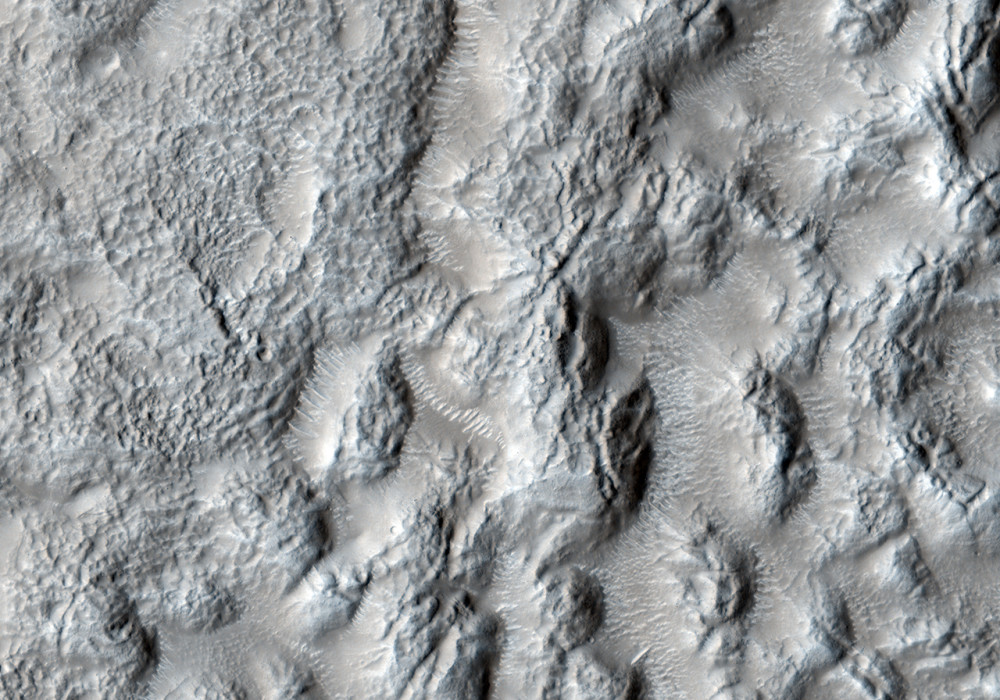This image of a crater in the Utopian region can be described as what happens when heat produced from an impact comes into contact with Mars icy surface.
Since the surface temperature of Mars is well below the freezing point of water, Marsâ soil is a mixture of soil and permafrost. When this impact occurred, a great deal of energy in the form of heat was released onto the surface, creating a melted feature in the bright icy soil. This melting and then refreezing of the ice (as the impact cooled) caused what is known as a periglacial formation. This is depicted towards the middle of the image where the ejecta blanket lays.
This is likely a geologically newer surface since the only impacts disrupting the image are a few small craters that are mostly towards the bottom left-hand side of the full image. The fact the ejecta blanket is still intact and not fully collapsed supports the idea that is it a newer surface feature as it has not been affected by erosional processes.
Note: this caption was written by student Laura Woodbury.Written by: Laura Woodbury/Circe Verba (20 May 2009)
More info and image formats at http://hirise.lpl.arizona.edu/PSP_010100_2165
Image: NASA/JPL/University of Arizona
